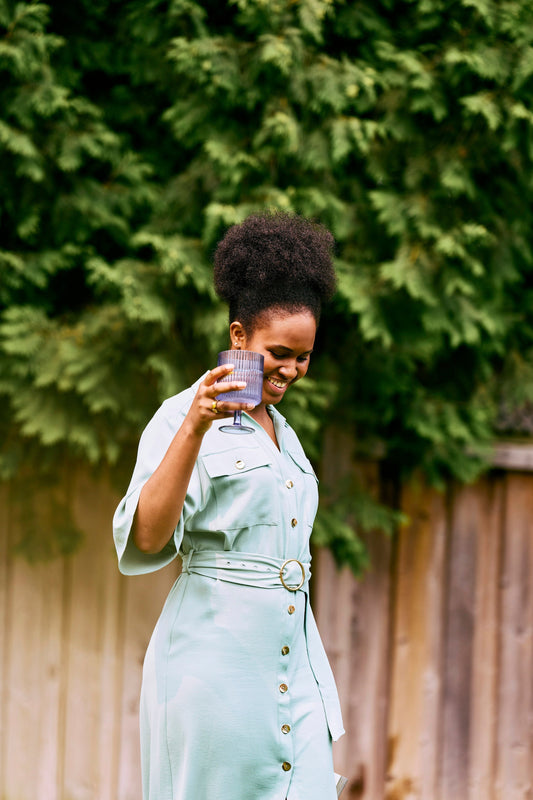I have a confession – when I’m in public, I obsessively look at people’s wrists. I’ve done this for years – ever since I became hooked on wearables in 2013. And now that I’m leading a team building a smart ring, I look at peoples’ hands. Even in the early days of Fitbit, I knew the power that wearables had to bring awareness through data. And that was just the beginning. Now we can make a real impact on health with the metrics we can see from these tiny sensors. And what’s more, at Movano Health, we build for women first, which in my view is long overdue.
We often get asked what about the Evie Ring is for women – after all, women have most of the same body metrics as men. While true, women’s bodies, and the changes they undergo over time, are lesser understood than men’s. For more on Movano Health’s investigation around this disparity, see our white paper.
What Women Want From a Wearable
When I tell people we’re designing a wearable for women, a common assumption is that our device is primarily a period tracker. But designing a ring for women requires so much more. One of the things that we found when we started to look at existing wearables is that most wearables look like they were initially designed for men and then repurposed for women as an afterthought. They tend to be bulky, don’t offer small enough sizes or use traditionally masculine design.
We spoke to over 1,000 women ages 30-75 and asked what was important to them about their needs and desires when it comes to wearables and digital wellness.
We found that although women want to use wearable products, they often don’t because of some of the shortcomings with the existing devices. Nearly half of the women we interviewed felt neutral, somewhat dissatisfied, or dissatisfied with their current wearables for the following reasons:
- There’s a lack of accuracy or reliability.
- The device costs and monthly subscriptions are prohibitive.
- Existing wearable are uncomfortable or unappealing to wear.
Women want wearables to be more accurate, personalized, and easier to wear, and they want wearables to go beyond metric tracking to help them better understand and manage their overall health.
By providing a gold standard wearable providing data and insights women can trust, we can take a step toward filling the gap in women’s healthcare. While the Evie Ring is a wellness device, it is built like a medical device, because we believe that women deserve a device – and the data the device produces – she can trust. And of course, the experience should also be fun, engaging, and worth her time
This article is meant to share key product principles, or our philosophies, in how we shaped the Evie Ring and App experience with women in mind from the outset. Afterall, wearables themselves aren’t new – my colleagues and I have been working in the wearable industry since the beginning – but designing for women first and making the device medical-grade from the beginning, certainly is novel.
Let me walk you through how we’re approaching the experience:
Evie’s Product Principles
1. The Evie Ring is as Beautiful as it is Comfortable.
The ring form factor is becoming a popular way to track body metrics because of its smaller footprint. We took an extra step in our design, and made the ring open with a little bit of flex. This is not only pretty, but it sits comfortably on the finger day and night and over the course of the month when women’s fingers tend to fluctuate in size due to hormonal changes. My body – including my fingers – swell enough that this little bit of give makes a big difference. When I wake up in the morning I am able to easily remove the ring and it doesn’t feel extra tight.
2. The Evie App Helps Users Connect with Their Bodies
Wearables have been put on the map because of the quest to get 10,000 steps a day, but the reality is few achieve it. Plainly, the experience can feel out of reach and many users throw their device in a drawer after six months. Evie’s approach is different, and the user experience seeks to address this reality head on by striving for a personal and contextual approach which both celebrates small wins and deepens our user’s connection with her own body. We do this in a few key ways:
- Trends over scores. Scores, like those for sleep and recovery, are incredibly popular in wearables right now. Wearables manufacturers provide scores as a simple way for users to understand their data, but our belief is that these scores often don’t match reality. The result? Lost user trust, or worse, a seed of doubt about how she is actually feeling. Instead of splashing a score in front of our users, the early days of use are focused on learning about the user – what are her patterns? Is she consistent in her routine? Is she restless through the night? With that information, we can bring observations forward. And in the future, once these observations are confirmed by our user, we’ll be able to start making predictive insights about her day.
- Celebration and gamification. While we pride ourselves on developing Evie with the standards of a medical device and presenting the best and most modern medical science for women, we also want the experience to be fun. Afterall, we know that even monetary compensation can’t make a user stick with a wearable. What creates the longest lasting experience is finding small moments to celebrate, incentivizing users with micro rewards over time. We create these opportunities by allowing users to choose a few personal goals for the metrics that are important to their health journey, whether that’s sleep cycles, activity, activity sessions, journal logs, sleep, steps, or mindfulness, making these goals dynamic, and, importantly, animating wins within the central, Daily Summary graphic. This graphic acknowledges that there is more than one way to have a good day – if the user didn’t get as many steps, but got plenty of active minutes, or took some time to log how they were feeling (a mindful moment), they earn a fun animation.
- Make the data consumable. We lead busy lives. And we also want to be healthier. How can we balance learning about our health, but also handle all of responsibilities we have in front of us? The data in the Evie App is intended to provide just the facts – it shows high level views of activity in daily, weekly, and monthly formats to help the user see where there are opportunities for improvement. Our sleep experience also shows key metrics including sleep stages, resting heart rate, heart rate variability, and respiration rate. Finally, we take these individual data points, and rather than ask the user to draw her own conclusions and show her what we’re seeing via insights by correlating these disparate data types.
3. Data and Content Women Can Trust
You probably already know by now that Movano Health is building the Evie Ring to the same standards as a medical device. We believe that consumers are savvy and, if they’re purchasing something for their health, they also want it to be accurate. That’s why we are taking the extra (or many extra) steps to make the Evie Ring as accurate as a medical device for key metrics. These two stats are also what underpin the sleep experience, respiration rate, and “spot check” experiences within the app. It’s important to us to be accurate because it’s important to our users and their health journey.
Further, we have gone to great lengths to ensure our content relies on the best and most modern science. This doesn’t mean that our app reads like a medical journal. Rather, we take the time to apply passively collected ring data and logged Journal data to complex concepts and provide timely insights with the purpose of educating, normalizing, and empowering. We believe that when users are empowered with these facts, which are contextualized just for them, that they’ll be able to consume the information in a real way.
4. Users Have Total Control Over Their Data
It’s important that the Evie experience makes users feel celebrated, engaged, and empowered. But what’s more, we want them to feel secure in the understanding that we consider the data collected on their behalf. While our privacy policy delves into this more deeply, we abide by key privacy principles. Our systems are designed to be compliant with medical regulations and provide users with control over their data. We are committed to helping women live healthier and more active lives which we can’t do without their trust. As such, we use industry-leading security protocols and strive to be transparent at all times.
Working on the Evie Ring has been the most rewarding experience of my career. And in building this product, I’ve had the opportunity to talk to a lot of women – from my personal life to professional, laypeople to medical doctors – and the response I receive is resounding: “it’s about time.” I’ll be the first to say that the team has built an incredible product experience and something that we truly look forward to growing with over time. Evie is just the beginning – we can put women in the forefront and build something special for them, and more importantly with them.




